11 Easiest Vegetables to Grow: Even if you are new to gardening
The average American eats only about 1/3 of the vegetables they should be eating each day. We’ve all heard that “vegetables are good for you” but when it comes to actually making them, who has time to spend hours in the kitchen? With these 11 easiest vegetables to grow, even a novice gardener can have fresh produce on their table!
Growing a garden offers many benefits to the gardener.
While it may seem like a lot of work, growing your own food can be an extremely rewarding experience. You’ll know exactly what’s gone into the product and will have full control over how to use our foods for more than just sustenance – you might even find yourself becoming inspired by all the possibilities!
A vegetable garden also saves a lot of money. If you are already eating a lot of vegetables and buying them at the supermarket then, I bet you didn’t know that by growing your own vegetables, it will save up to 50% on the grocery bill!
Many people are intimidated to take on the task of starting a garden, but it can be simple if you grow the right crops. There are many that yield great crops and don’t require tons of work!
To help get you motivated to growing your own food, we have compiled a list of the 11 easiest vegetables to grow
1. Lettuce
There are literally thousands of variety of lettuce that can be grown. They make up two main types, either leaf or head type lettuces. Leaf lettuce makes a great mixed green salad while Romaine and Iceberg for classic salads when it comes to the latter; you just couldn’t go wrong with any other varieties!
The seeds are easy to find at most any local big box store, many dollar stores and they’re so inexpensive. You can even get a deal like as low as 20 cents which is an awesome steal! If you want more options then head over to your friendly neighborhood family owned garden center for some lettuce plants too.
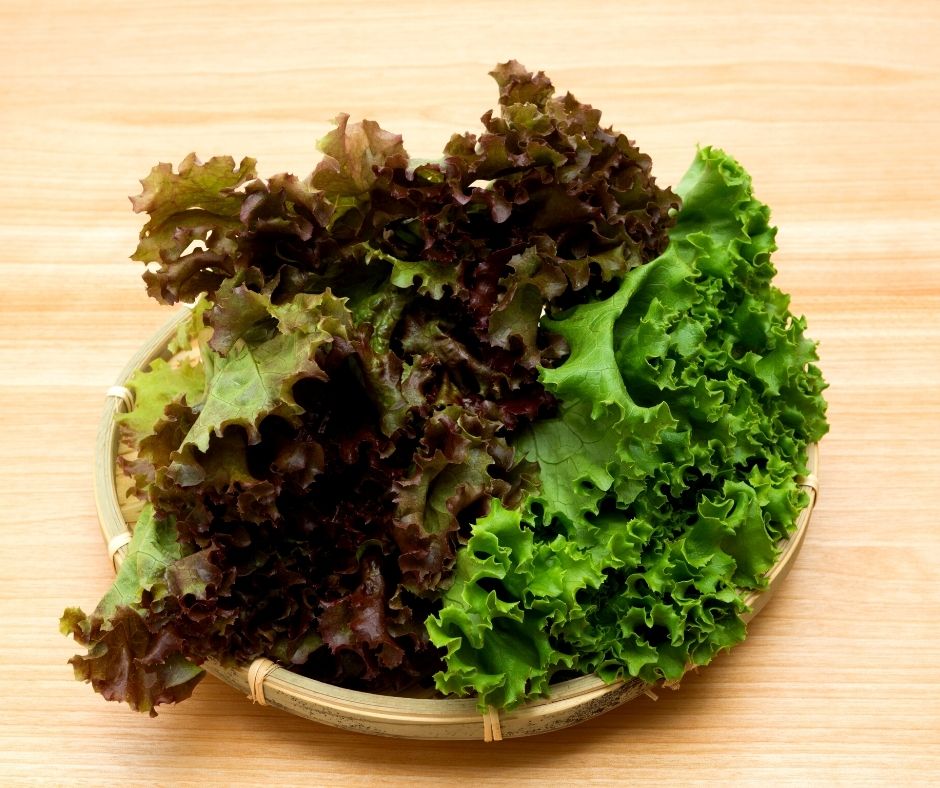
When should you plant lettuce?
Early spring or fall is the best time to plant lettuce. Lettuce can actually handle a little bit of frost. As long as temperatures don’t stay below 40 degrees Fahrenheit for extended periods of time then mature plants should be fine with some freezing too!
In the event that your temperatures drop or if you experience some snow, then there are a few things to keep in mind. You can always cover up plants with plastic or sheets and they should be fine (just make sure not to wrap them too tightly).
Lettuce is actually quite hardy when it comes to cold weather so don’t worry about covering these guys! If you’re worried about bolting – this just means that the plant has reached its life cycle and produces seed as an effort of reproducing. There are varieties of lettuce than even be grown into summer because they tolerate hot temps well which make them bolt resistant.
Can I Plant Lettuce Seeds Directly in the Ground?
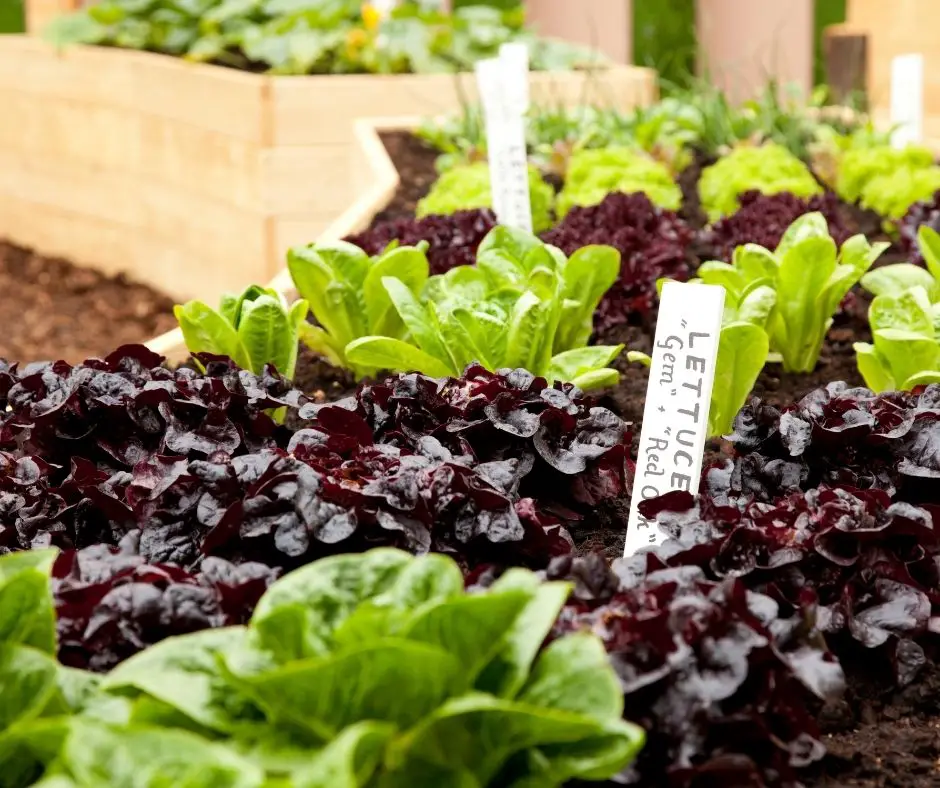
You can plant lettuce seeds directly into the ground in your garden. Lettuce is one of the best vegetables to direct sow seeds because they do not need to be planted deep and they are even cold tolerant so you can plant them before your last frost in the spring.
You’ll find that it is one of the easiest vegetables to grow directly into the ground. Just be sure you go over where the area where you planted them each week to see if there are too many seedlings clustered together in one spot. If this happens then we would recommend thinning those out for better growth!
You can just thin them and use them in a microgreen salad or you could potentially transplant them to another area in the garden.
It is a smart idea to plant a fresh crop of lettuce every two to three weeks during the growing season. This way helps avoid being overrun by too much lettuce all at once as well.
What Can You Plant Lettuce With?
You can plant lettuce with a lot of other vegetables such as tomatoes, chives, garlic, carrots, beets and more. Planting lettuce with these crops can maximize your garden space and crops like garlic will help to ward off pests from your lettuce. If you plant lettuce with crops like carrots and garlic that take a while before they are ready to harvest, you can harvest tasty lettuce leaves while you wait for your other crops to grow.
Where to Plant Lettuce
Plant your lettuce in area that gets at least 4 hours of sun a day and has well-drained soil amended with compost. If the area gets afternoon sun then use a bit of shade cloth or a sheet to give it some shelter from the hot sun.
Harvest lettuce leaves in the morning as the sun will cause the leaves to go soft as the day goes on.
Here is some additional information on growing lettuce and a bonus of growing lettuce indoors, as they are some of the easiest vegetables to grow.
| Harvest time | 65-80 days (depending on type) |
| Ideal temperatures | 45-75 °F |
| Planting time | Spring, Fall |
| Spacing | 6-18 inches (depending on type) |
| Germination time | 2-15 days |
| Light preferences | Sun or partial shade |
| Best companion | Carrots, radishes, beet |
2. Spinach
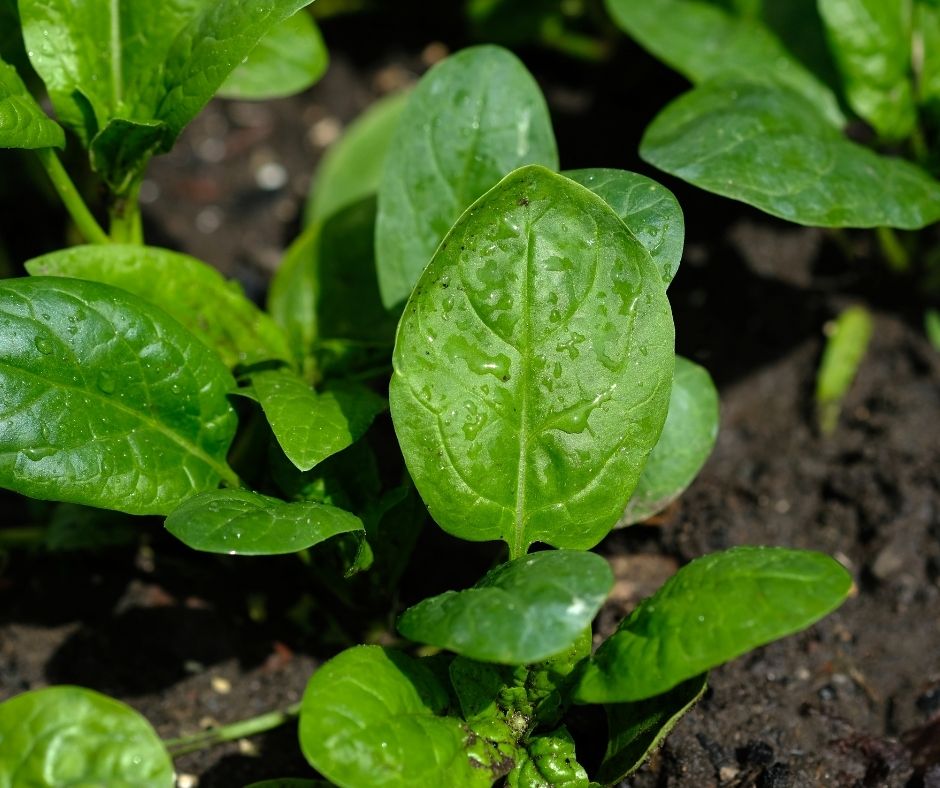
Spinach is one of the easiest vegetables to grow and deserves a top spot in easy vegetable list. This green leafy veggie can be grown from seeds, but it also does well when direct-sown into your garden or even an indoor pot! Spinach needs soil that drains easily without becoming waterlogged.
It prefers full sun as opposed to light shade, so if you don’t have much space for gardens outdoors consider planting some indoors near windows with enough natural sunlight throughout the day (just make sure they are not on too hot of a window sill!).
Once planted out – give them about 6 weeks before harvesting any leaves off – this time frame will vary depending on how cold things get where you live during winter months.
A few weeks after planting spinach, thin the plants so that there are no more than 10 inches in between them. Remove any clusters you see and give each plant a good drink of water. Spinach is cold weather friendly and thrives at temperatures as low as 15 degrees Fahrenheit!
Here we have more information on growing Spinach.
| Harvest time | 40-50 days |
| Ideal temperatures | 35-75 °F |
| Planting time | Spring, Fall |
| Spacing | 8 inches |
| Germination time | 6-21 days |
| Light preferences | Sun or partial shade |
| Best companion | Cabbage family, strawberry |
3. Green Beans
Green beans are a simple plant to grow with an abundant harvest. They’re perfect for people like me who love fresh vegetables and want the world to know it! Green beans have many different types that you should research depending on what type of bean you’re looking for, but I find half runners very delicious because they are so tender.
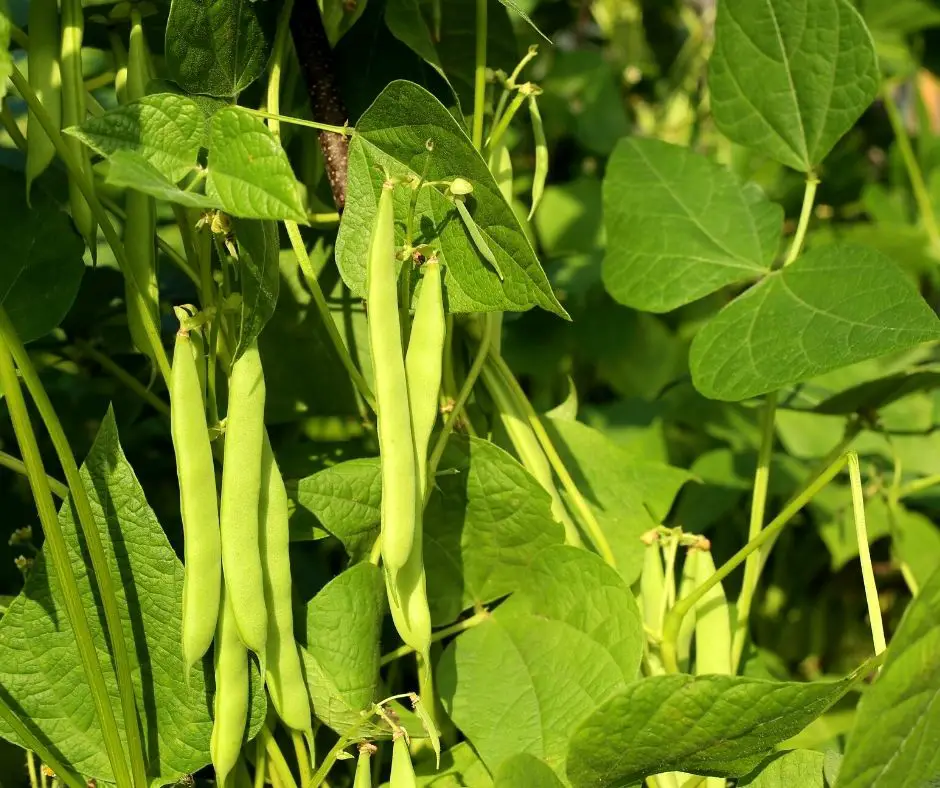
To make picking these easier, you’ll need to put them alongside some homemade trellis. Half runners are better for this as they have strings that hold the plant up when it grows and allows you more time between harvesting crops while still keeping a healthy number alive in your garden!
For those who don’t want to worry about stringing beans or picking beans from a vine, then bush bean might be right for you.
Did you know that green beans grow on bushes instead of vines? Unlike other varieties, they don’t have strings. It doesn’t take much to plant them properly! Just a patch of well-drained soil and the seeds go in right away.
Go over the row with a hoe or rake and lightly cover the seeds with compost. Within in a few weeks you will have tiny green bean plants sprouting in your garden! When watering, make sure to water from below – not above as this may encourage mold spores on top of soil that are bad for plant growth.
If your beans start turning yellow it is because they lack nitrogen so add some fertilizer (a high-nitrogen one) to their potting mix before planting them next time around!
You can buy blood meal or bone meal and place it around your plants. If you have rabbits, their poop will do the same job usually too! Green beans are also a favorite for bugs to munch on their leaves – they’ll leave them alone if these look like more appetizing options.
| Harvest time | 55-65 days |
| Ideal temperatures | 55-85 °F |
| Planting time | Early summer |
| Spacing | 6 inches, 18 inches (row) |
| Germination time | 8-16 days |
| Light preferences | Sun or partial shade where hot |
| Best companion | Potatoes, cabbages, radishes, peas |
4. Cucumbers
Cucumbers are one of the easiest vegetables to grow and I definitely recommend every beginner gardener plant some. Some people really enjoy them while others don’t, but it’s important to remember that even if you might not like eating a cucumber raw on your salad, they can be delicious when used in many other ways–for example as a homemade dill pickle!

Planting cucumbers can be done a few different ways. You may plant them directly in the ground or you could find some container plants to put your seedlings into so they have more room and nutrients throughout their growth period. Either way, make sure that you wait until after spring’s last frost before planting these warm weather crops because it is important for their survival!
If you choose to plant cucumbers in your garden, make sure they’re planted with well-drained soil and plenty of sunlight. When planting them, use compost as a nutrient booster for the plants just like any other kind of vegetable out there!
Cucumbers are a vine so as long as you give them ample space to grow, they will produce cucumbers. Creating an area for their vines to run along would be a good idea because it’s another way of getting the best out of your crop.
If you want to plant them in pots or containers, you can plant regular cucumbers or buy a container variety such as Spacemaster. You can grow some smaller varieties in pots on your patio or balcony to have fresh cucumbers right outside your door.
Mix some good quality potting soil with some high quality compost and some perlite to fill your pots. Then when planting simply add a handful of organic fertilizer such as Epsoma Garden Tone
Plant one cucumber plant per bucket. Be sure to place them in the sun and water those plants regularly. Fertilize your cucumbers every month or so!
Make sure to harvest the cucumber when they are ready and be careful not to leave any on the vine too long. If they have been on the vine too long they will start to turn yellow and become bitter as they are maturing.
| Harvest time | 48-65 days |
| Ideal temperatures | 70-85 °F |
| Planting time | Summer |
| Spacing | 12 inches, 3 feet (row) |
| Germination time | 4-13 days |
| Light preferences | Sun or partial shade |
| Best companion | Beans, carrots, parsley, cauliflower |
5. Zucchini
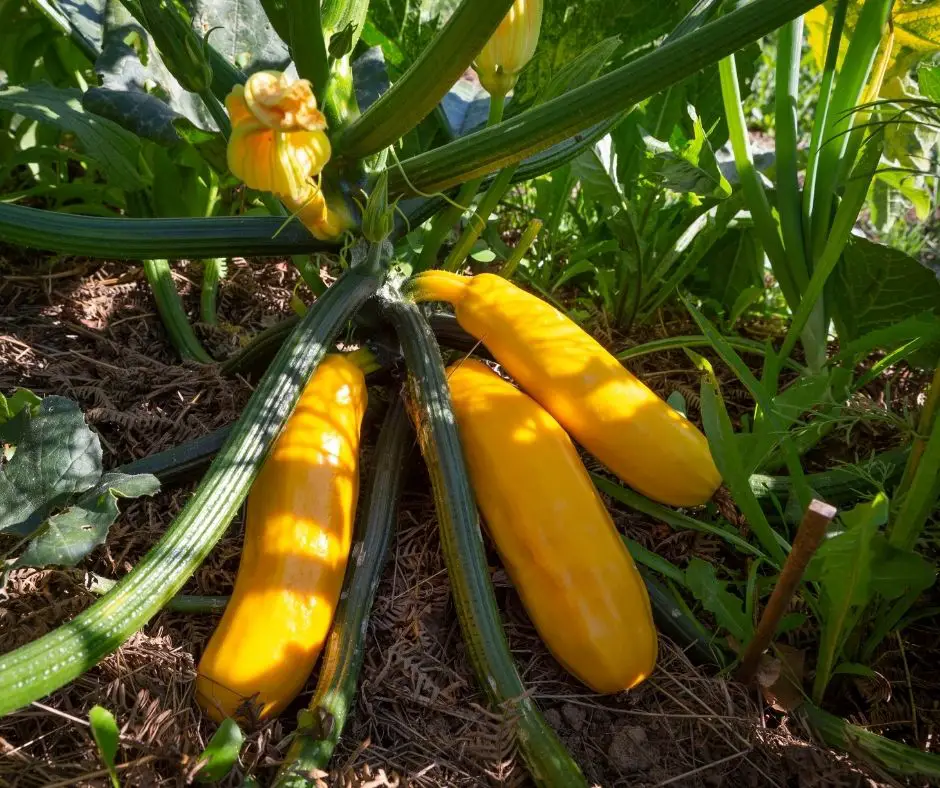
Zucchini are one of the easiest vegetables to grow. It is recommended that you either start your zucchini seeds indoors or buy seedlings for a quicker harvest.
The first step in planting squash, just like any other vegetable should be taking care of your soil and making sure it drains properly before planting anything into it. Zucchini enjoy sunlight so make sure they have direct sun exposure during at least part of the day; this ensures maximum nutrient production from their leaves which can then go straight down through their roots on into our delicious fruit!
You should be sure to give zucchini plenty of room. Zucchini come in two basic growth habits. The first being the bush varieties that produce a large bush with large leaves. The bush varieties grow up to 3-4 feet in diameter and are huge producers.
The second type is the vining varieties such as Trombonico which is known for producing large pumpkin style vines. It is important to either give them a trellis or ample room on the ground for their vines to run.
A monthly watering and occasional fertilizing will keep your plants healthy and strong! When they turn yellowish in color with thin stems that are easy to break off from the plant–you know it’s time for harvest!
| Harvest time | 48-65 days |
| Ideal temperatures | 70-90 °F |
| Planting time | Summer |
| Spacing | 12 inches, 3 feet (row) |
| Germination time | 6-12 days |
| Light preferences | Sun or partial shade |
| Best companion | Peas, beans |
6. KALE
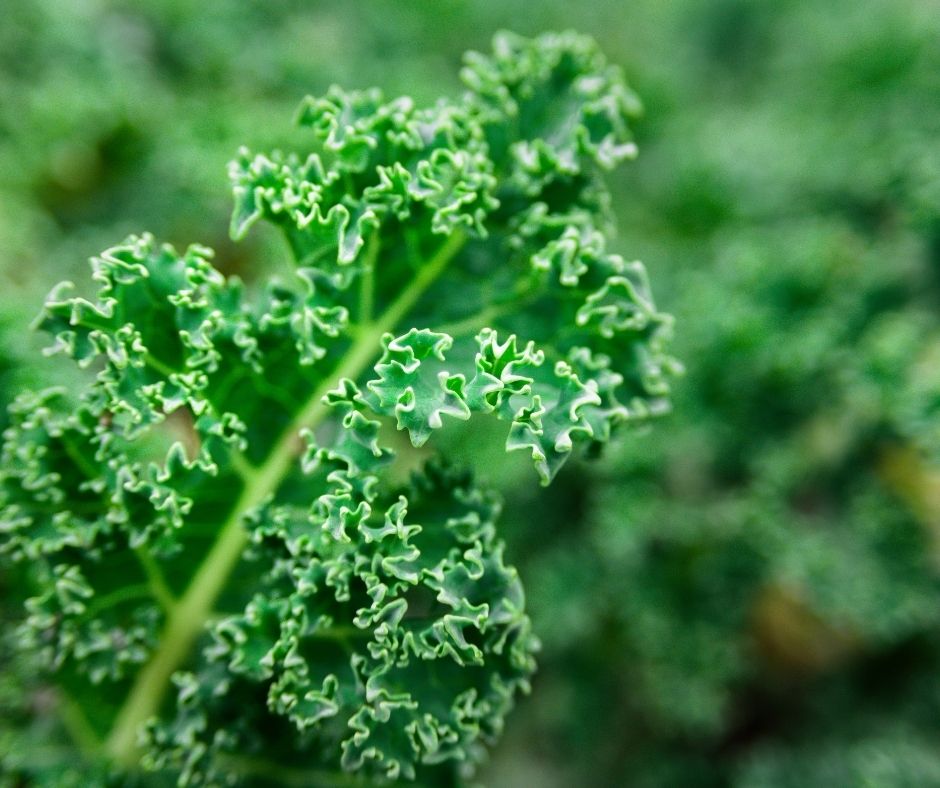
Kale, collards and mustards are all very hardy vegetables that grow well in a range of temperatures. They can be harvested at any point during their growth cycle, so it’s never too late to plant these greens!
Kale is a delicious, leafy green that can be enjoyed all year round and grows in many different climates. You’ll want to plant kale early spring through the summer months or even late fall for those who live further south. The great thing about this nutritious vegetable is it only gets sweeter after being hit by some cold weather!
Try these various cooking methods – baked, stir-fried, cooked with rice or pasta – they take on new flavors when mixed into salads made out of other greens like spinach which you could also eat all year long if you wanted too–and there are so many dishes where kale would work well: kabobs, soups (vegan), quiches…cereal bowls….you get
| Harvest time | 55-75 |
| Ideal temperatures | 65-75 °F |
| Planting time | Spring and/or Fall |
| Spacing | 12 inches, 3 feet (row) |
| Germination time | 6-12 days |
| Light preferences | Sun or partial shade |
| Best companion | Herbs |
7. Root Vegetables: Radishes and Carrots
Growing root vegetables is a great way to experience an easy gardening process. Radishes and carrots are two of the easiest vegetables to grow – they’re both easily planted into dirt or grown in containers. I love incorporating these veggies when cooking because not only do they taste delicious, but it’s also really satisfying knowing that you helped make them!
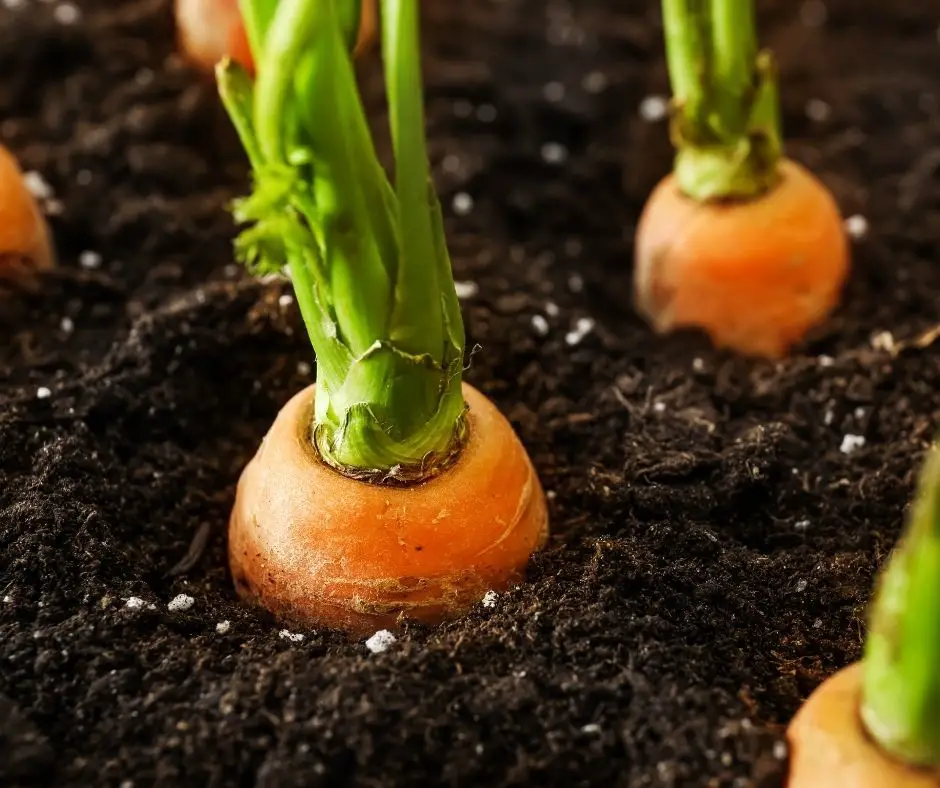
The key to growing successful root vegetables is not overcrowding the seeds and have loose enough soil for them to grow in. If you decide to plant these vegetables in the ground, it’s important that when planting, make sure your dirt is really loose so they can take hold and have amended with a good quality compost.
Radishes and carrots are best direct sown. Once the seedlings start coming up you’ll need to go through and thin any clusters so your plants will have room to grow!
If you have clay or other really clumpy dirt, try to choose carrots that are stubbier so they can grow to full capacity without having to push through all of that hard soil. Carrot varieties such as Danvers Half Long.
You can always plant carrots, radishes and other root vegetables in containers if you have poor soil. You will need a large container such as a 5 gallon bucket, grow bags or other planters that you could plant trees and other large plants in. Fill the bucket with loose soil and compost. Then plant your seeds and water them in.
If you scatter the seeds in the container you will need to go back a few weeks later when the seeds have sprouted and thin the seedlings down to the correct spacing.
Be sure to water your vegetables regularly as containers will dry out more quickly than in ground plants. It would also be a great idea to fertilize your plants every month or so with a liquid fertilizer such as compost tea or fish emulsion.
Whether you decide to grow your root vegetables in the ground or a container, knowing when to harvest is still the same. When tops of radishes and carrots get big, green and bushy it’s time for some testing!
If you pull them, and they appear full grown then it is safe to harvest. If a few of the plants have some growing left but most are ready than keep watering and fertilizing for a couple more weeks before harvesting.
After a few more weeks go back and check to see if they are ready.
| Harvest time | 60-80 days |
| Ideal temperatures | 60-70 °F |
| Planting time | Spring, Summer, Fall |
| Spacing | 3 inches |
| Germination time | 6-21 days |
| Light preferences | Sun or partial shade |
| Best companion | Peas, lettuce, tomatoes |
8. Peppers
Peppers are a very tasty vegetable that makes the list of easiest vegetables to grow.
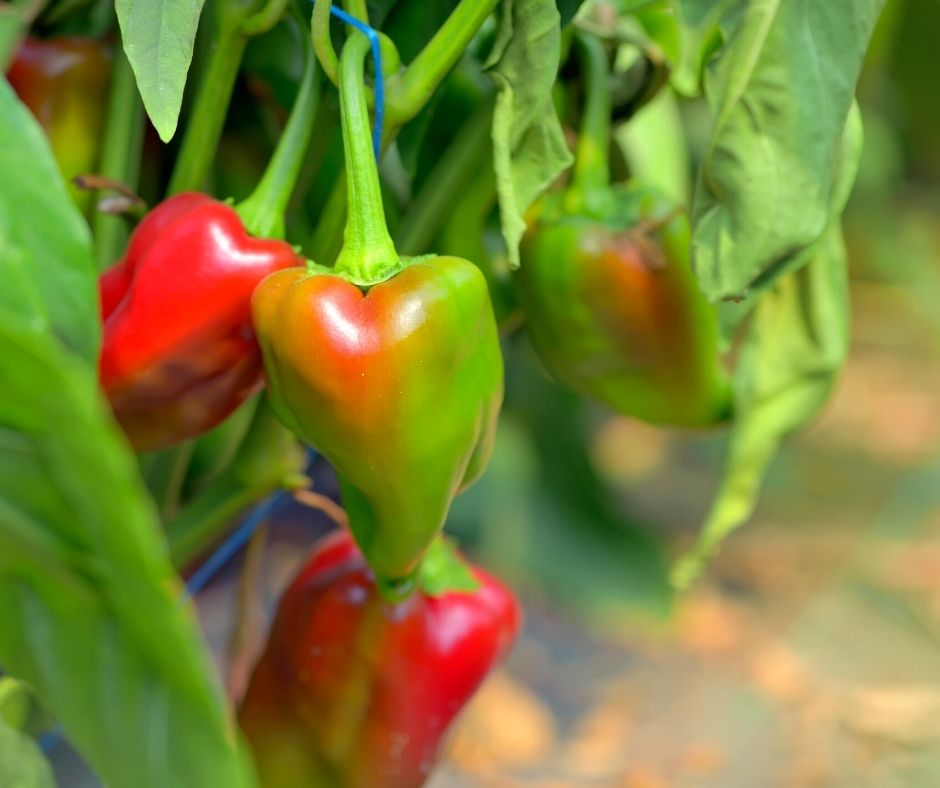
Pepper plants should be started indoors 8-10 weeks depending on variety before transplanting outside. Sweet peppers can be started about 8 weeks before your last frost whereas hot and superhot peppers should be started 10-12 weeks before. You can also purchase seedlings from your local nursery.
Peppers thrive in the heat! Make sure to wait to plant them until after all threat of frost has passed. Be sure to plant them in a sunny location that gets 6-8 hours of sun each day. You should plant them 10-12 inches apart into well-draining soil that has been amended with high quality compost.
After planting make sure to keep them well watered until they take root. After they have settled in you will want to water them regularly but allow them to dry out in between watering. You will also want to get onto a fertilizing schedule where you feed them some liquid fertilizer once a week or every 10-14 days.
In a couple of months you’ll start to see beautiful peppers. When the plant’s fruit turns bright green, yellow or red – depending on what color you planted- it is ready for picking!
| Harvest time | 60-80 days |
| Ideal temperatures | 70-90 °F |
| Planting time | Early summer |
| Spacing | 18-36 inches |
| Germination time | 8-25 days |
| Light preferences | Sun > 6 hours |
| Best companion | Basil, onions, carrots, radishes, okra |
9. Tomatoes
Tomatoes are one of the most sought after produce during this time because there is no comparison when it comes to homegrown tomatoes. They taste like nothing on a store shelf anywhere!

Just like peppers, it is I recommend that you start your tomato plants indoors 6-8 weeks before transplanting outdoors. Of course, you can also buy ready to plant seedlings at your local big box store or nursery.
Tomatoes are a delicious addition to any dish. Did you know that there’s more than one type of tomato? Some tomatoes have beef steak flesh, while others might be yellow or purple.
Related: Top 10 Cherry Tomato Varieties to Grow and Top 10 Tomatoes to Grow
Tomatoes can grow in all different types of weather and soil conditions too! Try out some varieties until you find your favorite flavor because they’re so versatile-they’ll go with anything!
Tomatoes are a sun-loving plant that hate the cold. Once you have your seedlings, be sure to place them in well drained soil and full sunlight – just as with our peppers! It is important before planting not only to make certain there has been no frost but also add compost around each of the plants when they’re planted.
Tomatoes will need watering regularly and fertilizing monthly once established so keep an eye on these two factors for best results.
Tomatoes need a lot of nutrients to grow, and if you see them turning yellow on the leaves it could be because they are lacking nitrogen. One way that works is adding some bone or blood meal around the base of each plant – but there’s more than one solution!
You can also try composting your kitchen scraps into an organic fertilizer for your plants (that includes coffee grounds!), watering with worm tea instead, spraying neem oil over everything…just experiment until you find what matches best with their needs! If all else fails just make sure to water well-it will do wonders in most cases.
Forget fast food. Once you try these easy vegetables, it’ll be safe to say all of your future meals will come from home! Growing a garden may seem complex at first glance, but the following veggies can easily grow in any climate and are some of the easiest for beginners.
| Harvest time | 60-100 days |
| Ideal temperatures | 60-90 °F |
| Planting time | Early summer |
| Spacing | 18-36 inches |
| Germination time | 6-14 days |
| Light preferences | Sun > 6 hours |
| Best companion | Chives, basil, carrots, peppers |
10. BEETS
You’ve got to try these beets we grew ourselves. They taste better than any you can find in the store! When they are boiled or roasted, nothing beats them for flavor.
The quirky seed capsules contain two or three beet seeds and so there will always need to be thinning done after sowing them out an inch deep and four inches apart; it is important that each plant has about 4-6 square feet of space around its roots where air circulates unimpeded by other plants’ leaves.
Harvesting roots from your garden can be a great way to extend the harvest season. Root vegetables like carrots, parsnips and turnips are all harvested at different times of year depending on what you want them for (like in soups or roasted), so it’s important not to miss any opportunities!
There’s no need wait until they’re too big before harvesting – just make sure that when you do pick them up, their size is between tennis balls and softballs. It might also take some experimentation if this is one new vegetable type for you – try using leaves as well while waiting for your plants root veggies get bigger!
| Harvest time | 60-100 days |
| Ideal temperatures | 60-90 °F |
| Planting time | Early summer |
| Spacing | 18-36 inches |
| Germination time | 6-14 days |
| Light preferences | Sun > 6 hours |
| Best companion | Chives, basil, carrots, peppers |
11. OKRA
Okra is another of the easiest vegetables to grow and one of our absolute favorites. This vegetable grows huge and produces a ton of fresh vegetables for your garden.
Okra can be direct sown in your garden or started indoors 6-8 weeks before your last frost. Once the seeds sprout – do not be concerned if the plants stay small as Okra really loves hot weather. Once the temperatures starting to get hot the okra will start to take off.
Okra should be planted in an area that gets sun 6 plus hours a day where the soil is rich and well draining. Be prepared to stake the plants if you have nutrient rich soil as the okra plants can get to be 6-8 feet tall in some situations. Once the plants have taken to their new location and they are growing you should water them once or twice a week and give them fertilizer every month.
Be sure to stay on top of harvesting your okra as it will produce tons of food for you. Harvest your okra when they are between 2-4 inches as they get tough the larger they get. I have to harvest my okra almost daily because they produce so much.
| Harvest time | 55-80 days |
| Ideal temperatures | 80-90 °F |
| Planting time | Late Spring – Early summer |
| Spacing | 12-18 inches |
| Germination time | 10-14 days |
| Light preferences | Sun > 6 hours |
| Best companion | Basil, Cucumbers, Peppers, Sunflowers |
The 11 easiest vegetables to grow in your garden are a great place for beginners and experts alike. They’re easy enough that practically anyone can do it, but they offer lots of flavor as well. If you want to get the most out of your backyard or rooftop space, these 11 veggies will make sure you have fresh food all year long! Which one was your favorite?
If you like this article about the 11 easiest vegetables to grow, please share it on social media and with friends. For all the latest recipes, container gardening tips and growing guides subscribe to our newsletter in sidebar.
Also, check out our article on What are the best herbs to grow? or How to prepare your herb bed for winter!
Be sure to Like us on Facebook and Follow us on Instagram, Twitter, and Pinterest!






